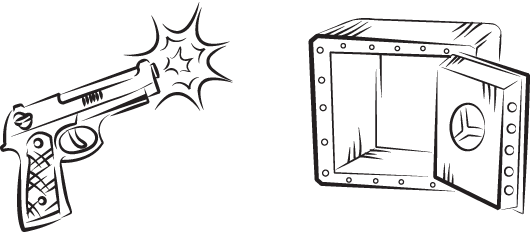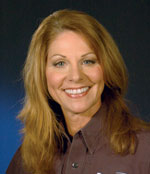
The Fall 2012 issue of the Journal looked at ways that members address the issue of firearm safety in their homes and shared insights from the FOP Auxiliary’s Lock It Up program. Below, the discussion on firearm safety, particularly as it relates to children, continues.

Before she had children, Betsy Brantner Smith, a member of Illinois Lodge #42 and nationally renowned police educator, didn’t think much about firearm safety in her home.
“I was a 21-year-old rookie. I was single. I had no kids,” she says. “It went on my nightstand.”
But the moment she found out that she was pregnant with her first child, Brantner Smith immediately began practicing better home firearm safety. “I wanted to make it a habit so that by the time she was born, it was routine,” she says.
That meant unloading her duty weapon and securing it in a quick-access lockbox.
Why go through all that trouble, day after day, night after night?
The answer is simple. As a law enforcement professional, she had a duty to practice proper gun safety, Brantner Smith says. She encourages others to follow suit.
“The biggest challenge in getting police officers to practice gun safety in the home is getting them to understand why it’s so important,” she states emphatically. “We develop an ‘It’s not going to happen to me mentality.’”
Here are some tips to keep your family safe.
Think Like a Kid
What is eye level to you isn’t eye level for a toddler. What you think is a tricky hiding spot is exactly where a teenager would look. Instead of trying to outsmart your child, you need to think like one, says Brantner Smith.
“Kids are naturally curious, so I recommend climbing on chairs and getting on your hands and knees to see what they see,” she suggests.
She adds that testing your gunlocks and gun safes should also be part of your routine. Finally, set rules and use language that your children can understand.
Your Gun Is Not a Tool
Police officers need to remember that a gun is an awesomely powerful firearm, says Brantner Smith. “It’s designed to kill. It’s designed to do incredible damage to the human body. But for some reason, some cops begin to think of it as just another tool on their belt.”
Brantner Smith says all cops need to develop a safety routine for when they come home from work. This means unloading their guns and locking them up. Every day. Without excuse.
And let your spouse know your plan, advises Brantner Smith. That way, there is a built-in safety check with another adult in the house.
Be the Teacher in Your Family
Brantner Smith teaches her clients to be their families’ own firearms instructors. “Hiding your gun from them only makes your kids more curious and your spouse more afraid,” she says.
A better alternative is to take the mystery out of it and tell your kids how it works, what it does to the human body and why it should never be played with.
Talk, Talk, Talk
 Father of two Greg Lee is a firearms instructor with the Nashville Police Department and member of Tennessee Lodge #5. He encouraged his kids to ask questions about his weapon so he could demystify it for them.
Father of two Greg Lee is a firearms instructor with the Nashville Police Department and member of Tennessee Lodge #5. He encouraged his kids to ask questions about his weapon so he could demystify it for them.
“It was like teaching them about the stove or a light socket,” he says. “I taught them the safety rules of a gun. If they wanted to see my gun, I would bring it out for them, unloaded of course, and we would talk about how dangerous it is.”
At the end of every teaching session, Lee would ask his kids to repeat his top-three gun safety rules: Always point the weapon in a safe direction, never touch the trigger and never handle a firearm unless an adult is with you.
How do you talk to your child(ren) about firearms? Leave a comment below.
For more on this topic, check out “Lock It Up” in the Fall 2012 issue of the Journal.




